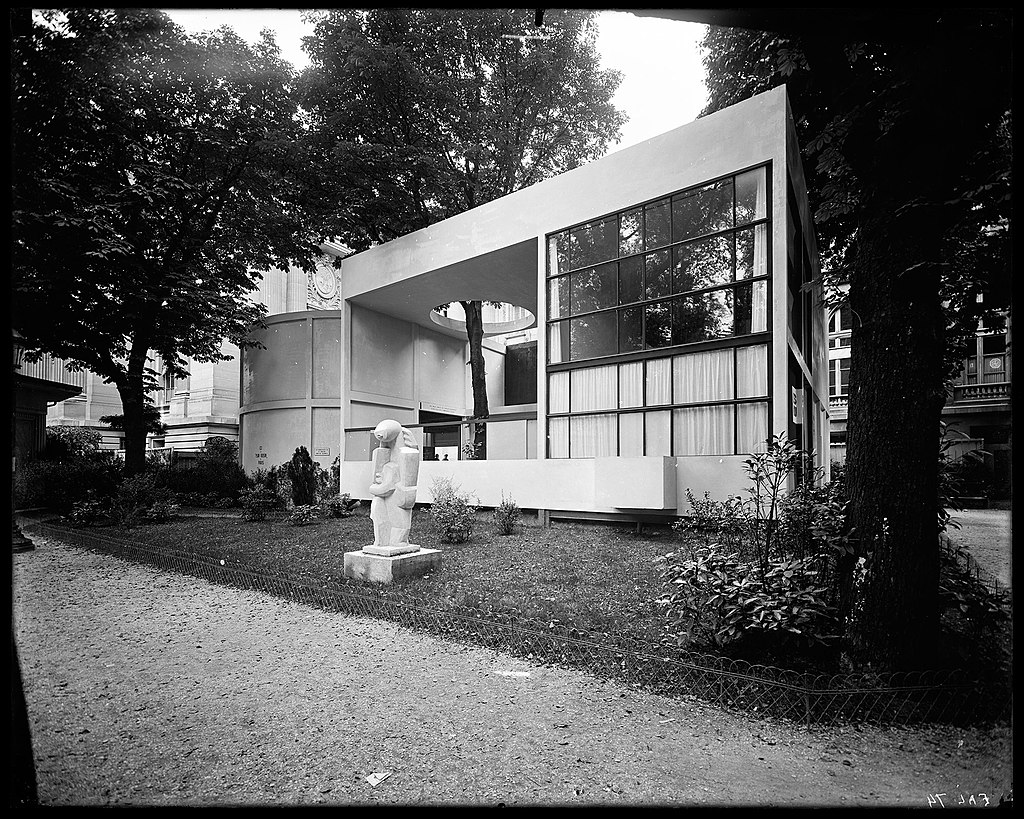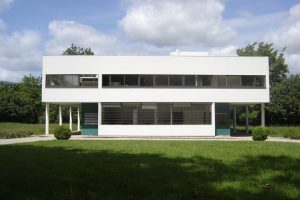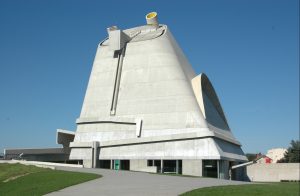Le Corbusier
Le Corbusier, born Charles-Édouard Jeanneret in 1887, was a Swiss-French architect. Now considered one of the pioneers of modernist architecture, Le Corbusier was also influential in urban planning.
One of his earliest works was the Esprit Nouveau Pavilion, which was built in 1925.

Pavillon L’Esprit Nouveau constructed for the 1925 International Exhibition of Modern Decorative and Industrial Arts in Paris, France.
This led to a number of commissions in Paris, including the Maison La Roche/Albert Jeanneret, the Maison Planeix and the Maison Cook. Le Corbusier was one of the most influential architects of the twentieth century, known for his Modernist designs that can be found all over the world. In 1928 he began arguably his most famous work – the Villa Savoye, a sleek, geometric building elevated by pillars to extend the garden space underneath.

Villa Savoye,, designed in 1929. On the outskirts of Paris, France. Photo by 3:14 flickr
Le Corbusier also designed Notre Dame du Haut, one of the earliest churches built in a Modernist style. Each window in the church is cut in different sizes, and the eastern edge of the building comes to a sharp point.
At the turn of the 20th century, Le Corbusier became concerned by the many problems of modern industrial cities. He reflected upon the crowding, messiness and lack of moral landscape exemplified by modern structures, and vowed to create better living conditions for all.
The home should be the treasure chest of living. – Le Corbusier

Church of Saint-Pierre, Firminy By lapin.lapin – lapin.lapin, CC BY-SA 2.0
In 2016, seventeen of Le Corbusier’s projects across seven countries were marked as UNESCO World Heritage Sites for his outstanding contribution to the modern architecture movement.
Learn more the modern architecture.
Cover photo





